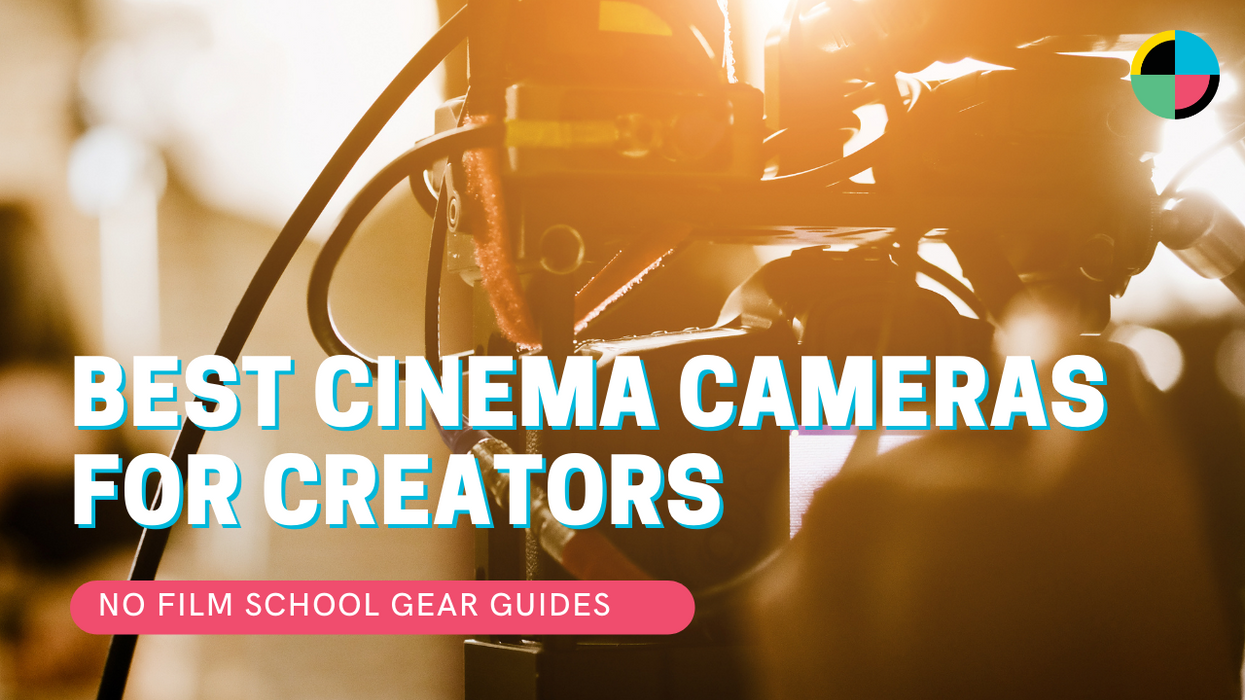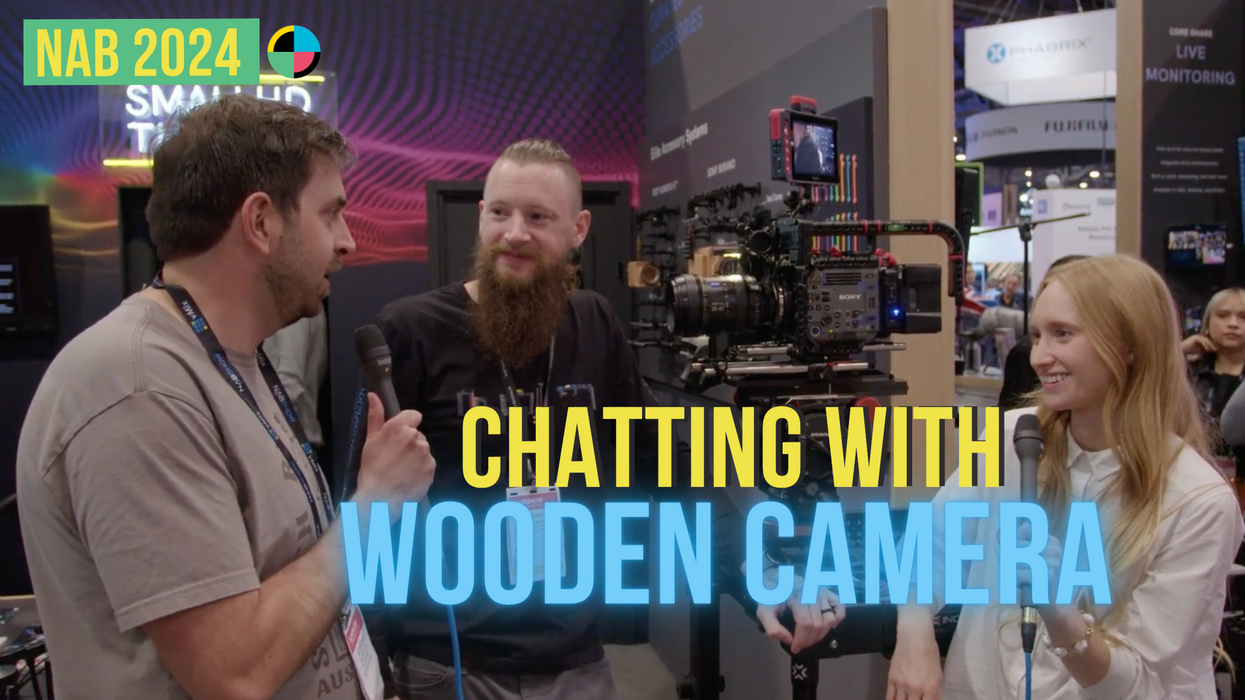Best Cinema Cameras for Creators
Check out our best overall pick as well as several strong alternatives.

For more advice buying gear head to our gear guide page!
Defining what makes a cinema camera a cinema camera is tough these days. Theoretically, there is not one single answer. And even though we're largely in a digital era, some of our favorite filmmakers still shoot Super 16mm, 35mm, and even 65mm film, which could potentially mean that a motion picture film camera from the 1970s was used to shoot your favorite "cinematic" images today.
But if we restrict ourselves to digital cameras, we still have a tremendous variety, from the top of the exclusive market to the most mass-marketed.
To us, this conversation is really about what is the best digital camera that was purpose-designed specifically for creating images targeted for cinematic release, meaning theatrical motion pictures.
Not a stills camera that also happens to shoot nice video or a camera that can do both corporate work and cinematic work. Those cameras tend to have some sacrifices in their design to serve dual purposes. While they can craft cinematic images, they aren't cameras designed exclusively for that purpose, and there will be limits, either in image quality or useability on set, that a true cinema camera doesn't have.
What we set out to answer here is, "What is the camera that delivers the most cinematic imagery possible without compromise in its design?"
If you're looking for a camera for documentary filmmaking or a mirrorless camera, we have all those and more at our gear guide hub page.
Here are the best cinema cameras you can buy or rent for your next production.
Best Overall: ARRI Alexa Mini LF
If money is no object, the ultimate digital cinema camera available to a filmmaker today is the Alexa Mini LF. What is most amazing about the camera topping the charts for this year is that the Mini LF is built around a sensor design from 2009. ARRI put a tremendous amount of engineering into that original ALEV-III, and thus when it was time for larger sensors, they simply started putting more of them together, in more orientations, to cover more space.
Initially, they launched the Alexa 65, with three sensors stacked together, then finally settled on the current A2X configuration in 2018 with two sensors, turned vertically and placed together. If you look carefully at the sensor itself you can even see the seam, though of course, it doesn't affect your images.
Then they took the sensor from the full-sized Alexa LF, and a year later were able to build a Mini LF that would deliver the same 4K image quality in a physically smaller camera body. Since the original Alexa Mini was a massive hit, dominating the charts for Sundance films every year and capturing countless music videos, the rolling out of a Mini LF was an exceptionally smart move for ARRI.
So why do we choose the Mini LF over the full-size LF? After all, the full-sized LF has a lot of really nice features lacking in the Mini LF.
For instance, a built-in video transmitter that saves rigging up external units to get video to your crew. Multiple SDI outputs that can be controlled separately, sending out different signals in terms of on-screen menus and even LUT control so that video village can get a clean feed while the DP and first AC can get the data they want.
While those features are nice about the Alexa LF, it has one major drawback, and that is its physical weight. It's a large camera. And for today's cinema, that is a drawback.
One of the few remaining features of "cinema" is a shooting pace that allows for more complicated camera moves. The Mini LF, with both its lighter weight and its more compact image size, allows for easier rigging.
The magic that ARRI engineers were able to achieve, putting a massive LF-sized sensor in a body not that much bigger than the original Mini and weighing only 5.7lbs, is a massive achievement. It's pretty much inarguable that makes the Mini LF one of the best cinema cameras around. The camera has already been used to shoot the blockbuster war film 1917, where it delivered stellar image quality while also moving constantly for the full runtime in a variety of stabilized situations.
On top of all that, it does it all shooting either to RAW or ProRes. While RAW is preferable when you have the post workflow to support it, internal ProRes was the only mode supported by the Alexa originally and there were a lot of feature films with multi-million dollar budgets that were totally happy with the image quality available shooting straight to ProRes. If you are doing a tight turnaround job like a music video or commercial, odds are your life is going to be easier shooting straight to ProRes with no significant image quality sacrifice.
Table of Contents
- Best Overall: ARRI Alexa Mini LF
- How We Picked
- Panavision DXL 2
- RED DSMC
- Sony VENICE
- Canon EOS Cinema Cameras
- Final Thoughts
How We Picked
Luckily for us, we've been able to get hands-on time with all of the major contenders on this list, so we've had a chance to have deep first-hand experience here. On top of that, we evaluated the cameras that have done the best both at the top of the industry, evaluated by the Academy Award for Cinematography, and also at the indie level with the cameras that shoot Sundance. We've watched major motion pictures, and prestige television, content produced on all the major platforms, and also looked at first-hand reviews from a variety of other users in major segments of the industry.
The other major contenders here fall into two categories: cameras from dedicated, cinema-focused companies, and cameras from companies also known for other products.
Panavision DXL2
Another major contender is the Panavision DXL2.
The DXL2, like the original DXL before it, is built around the Monstro 8K VV sensor but with Panavision flavor. That shows up with Light Iron color science, but even more with Panavision hardware to give their special touch to make it easier and faster to work with on set.
The standout feature is the internal motor control for lenses. This means you can mount a lens designed to work with the system, and focus and iris are automatically controlled by the camera, without the need to mount external motors. In a world of gimbals and drones, this is a huge perk and a truly neat bit of engineering that we wish others would match.
The DXL2 comes very much as a close second to the Alexa Mini LF. In the end, in the Alexa Mini LF, the ARRI sensor is really the deciding factor. There is a special sauce in the color that ARRI captures that even the DLX 2 and Light Iron processing can't quite match.
RED DSMC
It would be hard to bring up the DXL2 without mentioning RED. The company deserves all the accolades for bringing high-resolution cameras to the masses after the Dalsa Origin was introduced. Even though RED's camera body design is inspired by Minolta, the square form factor has been copied over and over again.
The Monstro 8K VV, the Helium 8K S35, the Gemini 5K s35, and even the Dragon-X 6K S35 sensors are amazing. Plus, the new Komodo offers global shutter at a price point of $6,000.
Each RED camera captures beautiful images in robust bodies that will treat you well and can be considered cinema-quality cameras. There is tremendous excitement about the launch of their global shutter in Komodo, and there is a lot of hope that this a return to form for RED in terms of doing what no other camera company can do at a price point no competitor can match.
Sony VENICE
Another camera to consider is from a company not only focused on cinema, but still one of the longtime innovators in the digital cinema space, Sony.
The Sony VENICE has a full-frame sensor and is a full-fledged cinema camera. It has expanded the footprint of Sony at the top end of the cinema market. By focusing heavily on color reproduction and offering great specs, and superior low-light performance, VENICE makes for an appealing combination for many productions.
Canon EOS Cinema Cameras
The Canon Cinema Cameras have been the de facto standard for documentary work but have proved themselves for narrative or broadcast workflows. The Canon C300 MK III is one of our favorites in the series at the moment.
The image has been transformed by the addition of a new sensor and color science. Canon added a new Dual Gain Output sensor, technology that has similarly been used by ARRI (and a few others) for years, which allows for higher dynamic range by providing two read-out paths for each pixel with different amplification.
This allows the camera to simultaneously “expose” for multiple saturation and noise values and combine them into one image. From what I’ve experienced, the C300 MK III adds about a little under a stop of dynamic range beyond the C300 MK II. The latitude of the footage has been improved as well. Beyond this improvement, the colors finally reflect what you see with your eyes. With the C300 MK III, the skin tones are beautifully reproduced.
Under the hood, the camera has a Super 35 sensor with a DIGIC DV 7 image processor. Besides 4K, the C300 Mark III can record Cinema RAW Light and supports XF-AVC (with a choice of Intra or LongGOP), offering flexible options in recording duration.
If you need a versatile camera that can be used for documentary or narrative work, the Canon Cinema Cameras are worth the investment.
Final Thoughts
The LF, the DXL2, the Komodo, VENICE—all of these cameras offer an image quality that was frankly unimaginable in digital imaging a decade ago. They will all create images that move audiences and have the potential to stand the test of time. The decision will, as always, come down to budget, schedule, and the specific demands of a given project.
Even with budget as no object, if your director wants to shoot everything at 4K 120fps to have the freedom of slow-motion in post, VENICE (or even the FX9) is going to be the choice over the Alexa.
That said, when budget is truly no object, or when raw image quality is your goal above all else, the Alexa Mini LF will be the first choice of most filmmakers most of the time.

















